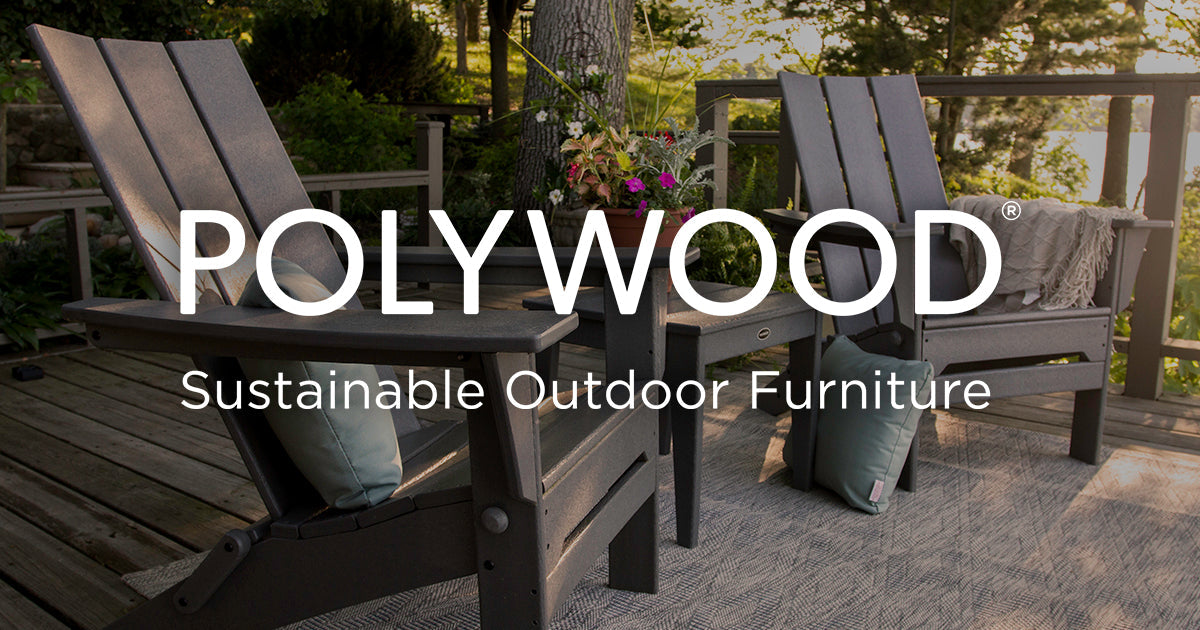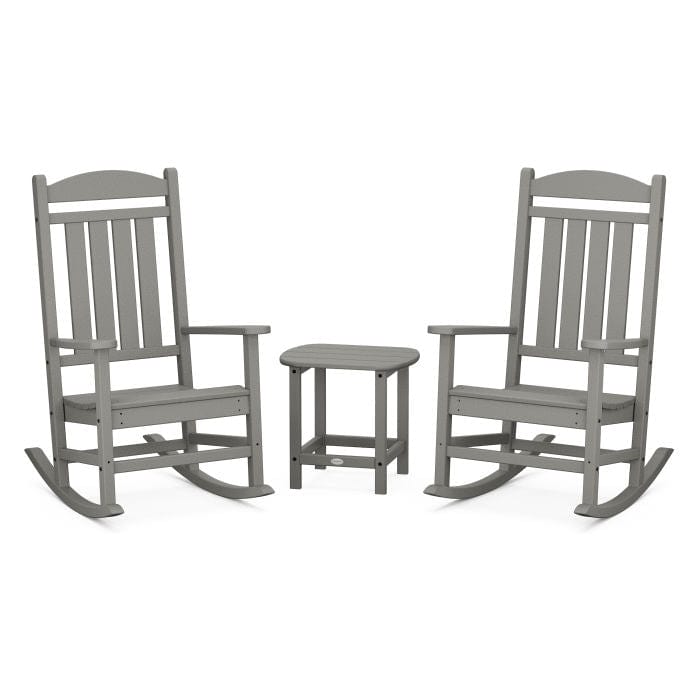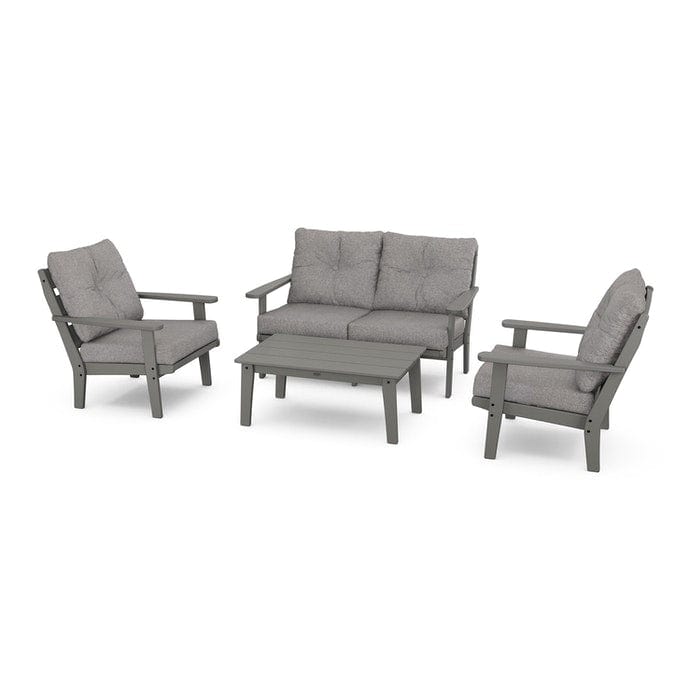
What Is Polywood Furniture? Definition, Materials, History & Brands
Darrell PawsonEstimated reading time: 8 minutes
Key Takeaways
-
Polywood is an engineered lumber made from 100% recycled HDPE plastic designed to mimic wood’s look and feel.
-
Offers exceptional weather resistance, including UV-, moisture-, and insect-proof durability.
-
Manufactured with color-through technology and requires minimal maintenance—just soap and water.
-
Leading brand POLYWOOD provides multiple finish lines (Heritage™, Vintage™, Select™) and a 20-year warranty.
-
Eco-friendly solution: waste reduction, end-of-life recyclability, and no harmful sealants or VOC emissions.
Table of Contents
Understanding Polywood: Polywood Definition
Polywood is a furniture-grade lumber crafted from high-density polyethylene (HDPE) plastic engineered to resemble wood. Unlike conventional wooden patio sets, Polywood delivers superior weather resistance and structural strength, making it ideal for decks, patios, and poolside lounging.
So, is polywood plastic? Technically, yes—it’s an advanced HDPE product. However, Polywood differs dramatically from generic plastic patio chairs. It’s formulated specifically for outdoor performance, resisting rot, splintering, and UV damage even after years of exposure to harsh elements.
> “Polywood represents a sophisticated approach to outdoor furniture manufacturing—combining the aesthetic appeal of wood with the unmatched durability of modern polymers.”
What Is Polywood Made Of?
Genuine Polywood lumber consists primarily of 100% recycled HDPE resin sourced from milk jugs, detergent containers, bottle caps, and other post-consumer plastics. This resin is blended with UV inhibitors, pigments, and stabilizers to create planks that withstand the elements year after year.
The key manufacturing steps include:
-
Collection and sorting of post-consumer plastics
-
Cleaning and grinding into fine resin
-
Mixing with protective additives and colorants
-
Extrusion into solid, wood-like planks
A hallmark of Polywood is its color-through technology: pigments are added during extrusion, so the color permeates the entire plank. This ensures resistance to fading, scratching, and peeling.
Typically, the final composition is about 95% recycled HDPE and 5% additives, delivering both performance and environmental benefits. Learn more on the Polywood materials page.
Poly Lumber vs. Polywood
Understanding the distinction between poly lumber and Polywood clarifies market terminology:
-
Poly lumber: Generic recycled HDPE boards sold to various furniture makers.
-
Polywood brand furniture: Finished products using proprietary formulas, branded finishes (Heritage™, Vintage™, Select™), and strict quality controls.
While all poly lumber offers weatherproof durability, Polywood brand items often come with:
-
Longer warranties (up to 20 years)
-
Distinctive finishes like Wirebrush™ texture
-
Broader style selections and premium price points
Brand lines include:
-
Heritage™: Smooth, traditional finish
-
Vintage™: Wirebrush™ texture for a weathered look
-
Select™: Microcell™ moisture barrier for enhanced performance
History of Polywood Furniture
The evolution of Polywood furniture parallels advances in plastic recycling and sustainable manufacturing. Beginning in the mid-20th century, innovators sought to repurpose HDPE waste into durable lumber alternatives.
Key milestones:
-
Development of techniques to transform plastic waste into structural boards
-
POLYWOOD brand founded in the 1990s, introducing the Heritage™ finish
-
Expansion with Vintage™ and Select™ lines and deep-seating performance fabrics
-
Introduction of 20-year warranties and global distribution
Over time, Polywood has matched wooden furniture in aesthetic appeal while surpassing it in durability and low maintenance. Explore their innovations on the Polywood materials page.
Who Makes Polywood Furniture?
While POLYWOOD is the leading U.S. brand, several manufacturers offer poly lumber furniture. POLYWOOD features:
-
U.S. manufacturing facilities
-
Domestically sourced recycled HDPE
-
20-year warranties
-
Multiple finish lines (Heritage™, Vintage™, Select™)
-
Proprietary Microcell™ moisture barrier
Other notable manufacturers:
| Manufacturer | Location | Materials Sourcing | Warranty | Signature Styles |
|---|---|---|---|---|
| POLYWOOD | USA | Recycled HDPE | 20 years | Adirondack, deep seating, dining sets |
| Modway | Global distribution | Recycled plastics | Varies by collection | Modern, contemporary styles |
| Shumaker | USA | Recycled HDPE | 5–20 years | Traditional outdoor furniture with durability |
When choosing a polywood furniture manufacturer, consider warranty coverage, environmental commitments, design range, and price-to-quality ratio. Visit the Polywood materials page for more details.
Polywood HDPE Furniture
Polywood HDPE furniture spans seating and tables engineered for all-weather use. Its performance advantages include:
-
Moisture resistance: Won’t warp, rot, or mold.
-
Fade resistance: Color-through technology prevents UV bleaching.
-
Low maintenance: Clean with soap and water—no sanding or sealing.
-
Weatherproof durability: Withstands snow, salt air, and extreme heat.
Popular styles:
-
Adirondack chairs
-
Jefferson Woven rocking chairs
-
Dining sets
-
Benches for gardens and patios
-
Lounge and deep-seating collections
These pieces blend classic designs with modern materials for lasting outdoor comfort. Learn more on the Polywood materials page.
Polywood Outdoor Furniture Explained
Polywood’s advantages over wood are clear:
-
Insect-proof: Immune to termites and wood-boring pests.
-
Splinter-free: Homogeneous composition prevents cracking or splintering.
-
No seasonal maintenance: Eliminates painting, sealing, or treating.
Care is simple:
-
Quarterly cleaning with mild soap and water
-
Rinse thoroughly to remove residue
-
Avoid harsh solvents or abrasives
-
Optional covers for extreme conditions
Premium brands back this with 20-year warranties—far exceeding typical wooden furniture guarantees.
Eco-Friendly Polywood Material
Eco-friendly Polywood spearheads sustainable outdoor furniture:
-
Waste reduction: An Adirondack chair can contain ~500 recycled milk jugs.
-
Lifecycle sustainability: Exceptional durability means fewer replacements.
-
End-of-life recyclability: Boards can be recycled again, fostering a closed-loop system.
Compared to wood:
-
No chemical sealants or paints with VOC emissions
-
No deforestation or habitat destruction
-
Reduced water and chemical use during maintenance
-
Lower lifetime carbon footprint
For conscious consumers, Polywood delivers style, performance, and sustainability. Read more about the pros and cons of Polywood furniture.
Conclusion
Polywood furniture is an innovative outdoor solution made from engineered HDPE plastic that marries wood’s aesthetic appeal with superior durability. Its recycled composition, fade- and moisture-resistant performance, and minimal upkeep make it a popular choice for modern outdoor living spaces.
From its mid-20th-century recycling roots to today’s advanced product lines—Heritage™, Vintage™, and Select™—Polywood has evolved to meet demands for sustainability, style, and longevity. Whether you choose the POLYWOOD brand or other manufacturers, these products deliver consistent performance unmatched by traditional materials.
Embrace Polywood for your patio or deck and enjoy a beautiful, low-maintenance, eco-friendly outdoor environment for years to come.
Frequently Asked Questions
What is Polywood furniture?
Polywood furniture is outdoor furniture made from high-density polyethylene (HDPE) plastic engineered to mimic wood. It offers weather, moisture, UV, and insect resistance, requiring minimal maintenance.
How durable is Polywood furniture?
With full-body coloration and a homogeneous composition, Polywood resists warping, rotting, fading, and splintering. Premium brands back their products with up to 20-year warranties.
Is Polywood furniture eco-friendly?
Yes. Polywood repurposes post-consumer HDPE (e.g., milk jugs) into durable lumber, reduces landfill waste, requires no VOC-emitting sealants, and can be recycled again at end-of-life.
How do I maintain Polywood furniture?
Simply clean quarterly with mild soap and water, rinse off residue, and avoid harsh solvents. Protective covers are optional but not essential.
Are there different brands of Polywood furniture?
The leading U.S. brand is POLYWOOD, which offers Heritage™, Vintage™, and Select™ lines with 20-year warranties. Other manufacturers like Modway and Shumaker also produce poly lumber furniture with varying warranties and styles.




